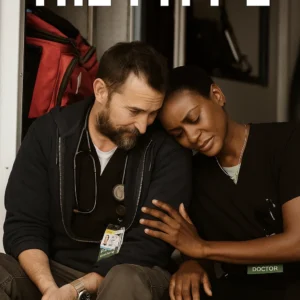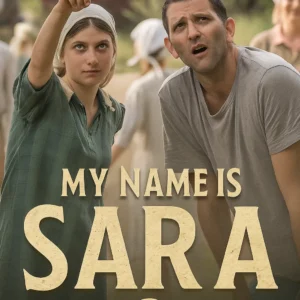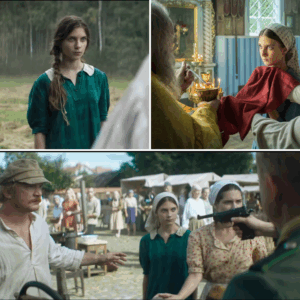Since its debut on April 17, 2024, Under the Bridge has emerged as a standout true crime series on Hulu, captivating audiences with its raw emotional power and unflinching narrative. Described by viewers as “phenomenal and heartbreaking,” this eight-episode Canadian drama, based on Rebecca Godfrey’s 2005 book of the same name, delves into the chilling murder of 14-year-old Reena Virk, a case that shook British Columbia in November 1997. As the series becomes available on Netflix in various regions by July 2025, its haunting exploration of youth violence, societal failure, and personal trauma continues to resonate, marking it as one of the most unsettling yet compelling watches of the year.
The Tragedy That Shook a Nation
The story begins in Saanich, a suburb near Victoria, British Columbia, where Reena Virk, a teenager of South Asian descent raised in a Jehovah’s Witness household, sought acceptance among her peers. On November 14, 1997, Reena attended a party near the Craigflower Bridge, hoping to connect with a group of girls from the Seven Oaks group home. What followed was a brutal assault by seven teenage girls and one boy, later dubbed the “Shoreline Six,” who beat her mercilessly. As Reena tried to escape, two of her attackers—Kelly Ellard and Warren Glowatski—followed her, drowned her in the nearby Gorge Waterway, and left her body undiscovered for eight days. The case stunned Canada, not only for its brutality but for the young age of the perpetrators, exposing deep-seated issues of bullying, alienation, and systemic neglect.
Under the Bridge frames this tragedy through dual perspectives: Rebecca Godfrey (Riley Keough), a writer returning to her hometown to research the case, and Cam Bentland (Lily Gladstone), a local police officer with her own troubled past. The series unfolds across timelines, blending Reena’s final days with the investigation, offering a portrait of a girl caught in a web of peer cruelty and personal longing. Unlike typical whodunits, the focus shifts from the act itself to the “how” and “why”—a sociological study of a community’s unraveling.

A Cast That Brings Depth to Despair
The series owes much of its impact to its exceptional ensemble. Riley Keough, known for Daisy Jones & The Six, delivers a nuanced performance as Rebecca, a character inspired by the real-life author who died weeks before production began in 2022. Her portrayal captures a woman torn between journalistic curiosity and personal ghosts, her interactions with the teens teetering on an unsettling edge. Lily Gladstone, fresh off her Oscar-nominated role in Killers of the Flower Moon, brings a quiet strength to Cam, an Indigenous officer adopted into a white family. Her character’s insight into racial dynamics—often overlooked by others—adds a critical lens to the investigation.
Vritika Gupta shines as Reena, her expressive face conveying the vulnerability and defiance of a girl yearning for belonging. The young cast, including Chloe Guidry as the menacing Josephine Bell, Izzy G. as the cold Kelly Ellard, Aiyana Goodfellow as the conflicted Dusty Pace, and Javon Walton as the troubled Warren Glowatski, bring authenticity to the teenage dynamics. Archie Panjabi and Ezra Faroque Khan, as Reena’s grieving parents Suman and Manjit, deliver heartrending performances, their understated sorrow amplifying the family’s marginalization as a South Asian minority in a predominantly white town.
A Narrative That Challenges True Crime Tropes
Under the Bridge, developed by Quinn Shephard with executive producers Liz Tigelaar and Samir Mehta, defies the sensationalism often associated with the genre. Rather than glorifying the killers or law enforcement, it seeks to humanize Reena, a goal Rebecca articulates early on: “People should be remembered for who they were, not what happened to them.” The series uses flashbacks to depict Reena’s life—her clashes with her strict mother, her fascination with hip-hop, and her desperate bid to fit in—painting her as more than a victim.
The narrative structure, jumping between past and present, mirrors the fragmented memories of those involved. The investigation reveals the group dynamics at play: Josephine’s gang obsession, Kelly’s ruthless ambition, and Warren’s quiet remorse. Yet, the show avoids easy answers, highlighting how societal failures—racial biases, inadequate policing, and the isolation of foster care—contributed to the tragedy. Critics have noted similarities to Sharp Objects and Mare of Easttown, but Under the Bridge stands out for its empathetic focus on the victim and its critique of systemic issues, though some argue it stumbles with underdeveloped subplots in its later episodes.
The cinematography, shot in British Columbia, enhances the mood with its moody coastal visuals, while the score by Edvin Nahlin and Joel Danell underscores the tension. The Craigflower Bridge, a real location, becomes a haunting symbol of the divide between innocence and violence, its quiet presence a stark contrast to the chaos it witnessed.
Themes of Alienation and Justice
At its heart, Under the Bridge is a meditation on alienation. Reena’s struggle to find her place—estranged from her conservative family and rejected by her peers—reflects broader themes of teenage isolation. Her status as a Jehovah’s Witness in a Sikh community, compounded by racial and cultural differences, amplifies her outsider status, a point Cam poignantly raises as the only authority figure to address race’s role in the case. The series also examines the cycle of violence among the teens, many of whom, like Josephine and Kelly, hail from broken homes or foster care, suggesting a society that fails its most vulnerable.
Justice, or the lack thereof, emerges as a contentious theme. The real-life case saw the Shoreline Six convicted of assault, while Kelly and Warren faced murder charges—Kelly’s initial acquittal and later conviction after multiple trials remain a point of controversy. The series mirrors this ambiguity, ending with a resolution that feels incomplete, leaving viewers to grapple with the inadequacy of legal outcomes. Rebecca’s evolving realization of her own privilege and biases adds another layer, critiquing the true crime genre’s tendency to prioritize perpetrators over victims—a flaw the show strives to avoid.
Critical Acclaim and Cultural Impact
Under the Bridge has garnered widespread praise, earning an 88% Certified Fresh rating on Rotten Tomatoes and peaking at #3 on Hulu’s global charts. Reviewers hail its respectful handling of Reena’s story, with outlets like The Guardian and Forbes commending its emotional depth and performances. However, some, including Entertainment Weekly, critique its uneven pacing and reliance on familiar tropes, suggesting it doesn’t fully escape the genre’s pitfalls. Viewer reactions on platforms like IMDb echo this duality—many call it “gripping” and “a must-watch,” while others find it “depressing” or “hard to finish” due to its graphic depictions.
By July 2025, as it streams on Netflix in regions like the UK via ITVX, the series taps into a cultural moment reflecting on resilience and justice post-pandemic. Its exploration of bullying and racial dynamics resonates amid ongoing discussions about youth mental health and systemic inequality. The cast’s diversity, particularly Gladstone and Gupta, has been celebrated as a step toward inclusive storytelling, though some question the fictionalization of Rebecca’s role, placing her at the crime scene despite her real-life absence.
Conclusion
Under the Bridge is a haunting true crime saga that lingers long after the credits roll. Its title evokes the literal and metaphorical space where innocence was lost, a bridge between childhood and the abyss of violence. With stellar performances, a poignant narrative, and a setting that amplifies its mood, the series offers a window into a tragedy that continues to echo. While not without flaws—its slow pace and occasional narrative tangents—it succeeds as a tribute to Reena Virk, challenging viewers to see her humanity rather than her murder.
As of 09:55 AM +07 on July 31, 2025, Under the Bridge remains a powerful addition to Netflix’s lineup, a reminder of the fragility of youth and the enduring impact of a single devastating act. For those prepared to face its darkness, it’s a story that demands attention, blending heartbreak with a call for understanding in a world where such crimes still occur.



